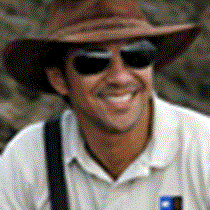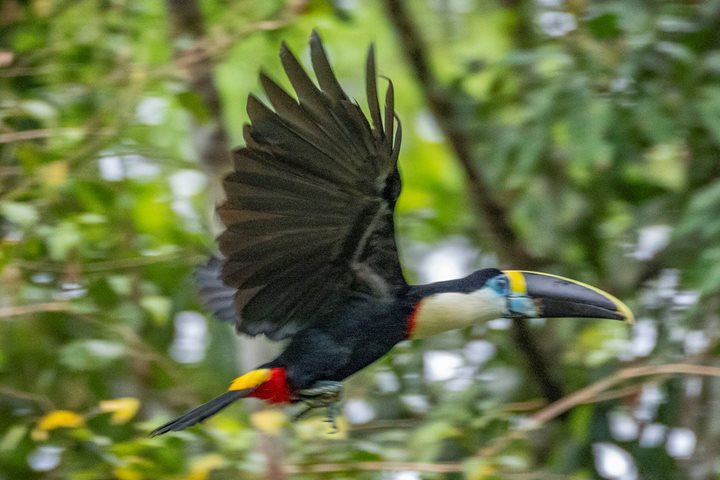Near the edges of the rivers and tributaries in Amazonian Peru grows a particular forest type, which is adapted to maturing quickly in clearings created by the water’s scouring action. This type of forest is known as “riverine” or “flooded” forest. Today, our early morning outing was concentrated in one large creek system known as “Pawachiro creek”, which had these specific geographical characteristics. As we made our way along the river bank, we notice lots of emerging trees, such as cecropia, caña brava and willows. This is a great ecological environment for many shore birds, and we were delighted at the amount of sightings during our skiff ride.
Large flocks of snow egrets covered the sky, creating a beautiful landscape. Here and there we stopped to see some of the more land-based birds that were hunting along the river banks. Hawks were some of the frequent sightings—some carrying fish, lizards, snails and even crabs, all of which are part of the daily diet of one of these dominant predators of the forest.
During breakfast time, we navigated to the nearby village of San Francisco. It was here that we had the opportunity to visit the ‘rivereños,” or people from the river. San Francisco Village is located at the convergence between the Marañon and the Ucayali Rivers, and not too far from the main town of Nauta. However, none of these towns or villages are connected to each other, as there are no roads in this part of the Amazon, and the only way to interact among them, or to commerce their products, is by rowing their canoes (locally known as “peque peques”). Our interaction with them today was all about learning about their way of life, by observing their houses, farms, and the local school. It was a very interested experience for our guests, to see how people can make their lives in such isolation.
Once we returned to Delfin II, we made our way into the Ucayali River, which is where we will be navigating for the rest of our trip. This river is approximately 1,700 miles long, and it extends all the way to southern Peru, where it is born in the majestic Andean mountains.
Our afternoon was another visual explosion of wildlife and colors, as massive migrations of shore birds occur at this time of the year due the low water season in the Amazon. This phenomenon happens every year, when cormorants, egrets, storks and jabirus migrate and arrive to this section of the Amazon looking for the newly exposed land, revealing large amounts of hunting grounds full of crabs and fish.
It was a fascinating day, here in the Amazon, and our adventure continues tomorrow.







